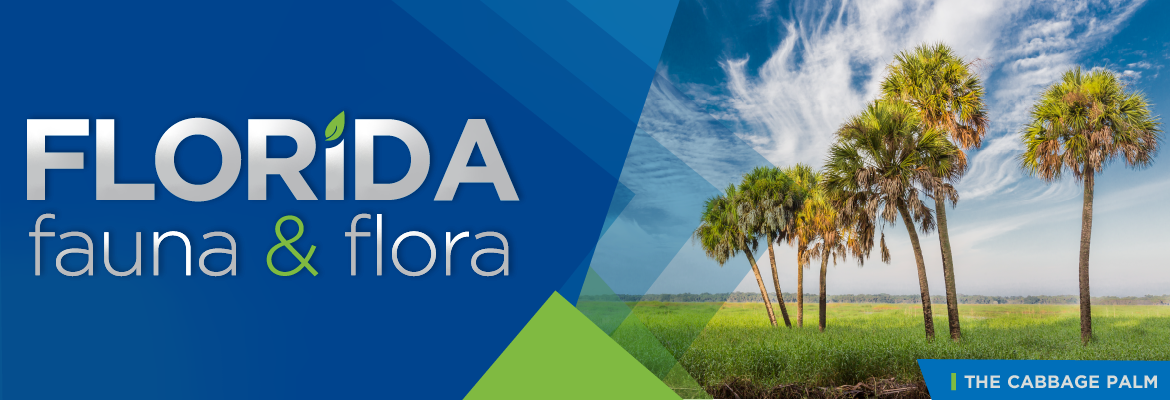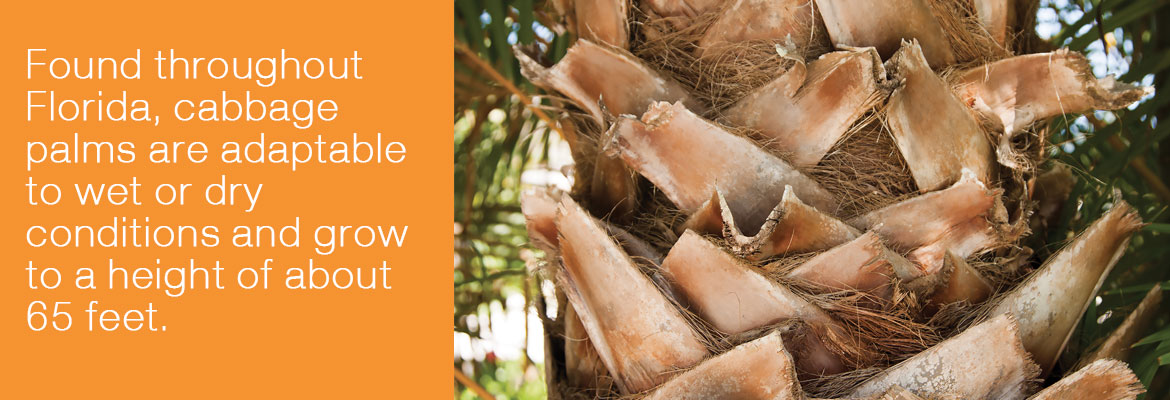Florida Fauna & Flora – The Cabbage Palm
The Florida state tree is the cabbage palm. You may know this palm as a sabal palm, sabal palmetto or cabbage palmetto. Cabbage palms are one of fifteen species of palmetto palms. South Carolina has also adopted the cabbage palm as its state tree.
The cabbage palm appears in the background of Florida’s state seal. The seal depicts a Seminole woman spreading flowers on a shoreline with the sun’s rays near the horizon and a sailing steamboat and two cabbage palm trees. “Great Seal of the State of Florida” and the state motto “In God We Trust” encircle the seal.
Cabbage palms can grow to heights of 65 feet, and thus should not be planted under or near power lines. This palm is native to the southern United States, Cuba, the Turks and Caicos Islands and the Bahamas. It is very salt-tolerant and often grows near the coast along the Gulf of Mexico and the Atlantic Ocean. It requires hot summers to grow well.
FUN FLORA FACT: Have you ever eaten swamp cabbage? Cabbage palms have a cabbage-like inner core that is harvested and eaten. If you haven’t tried swamp cabbage, you may find it on a salad bar and know it better as hearts of palm. It’s delicious!
Read the full July 2020 SECO News online.





